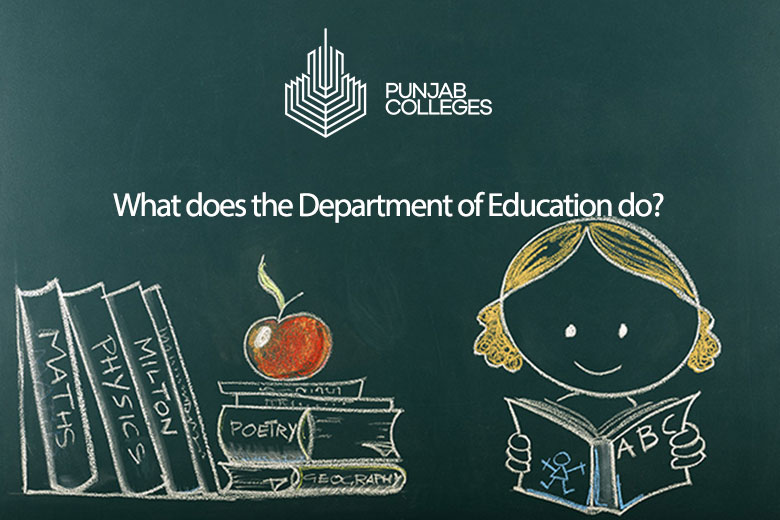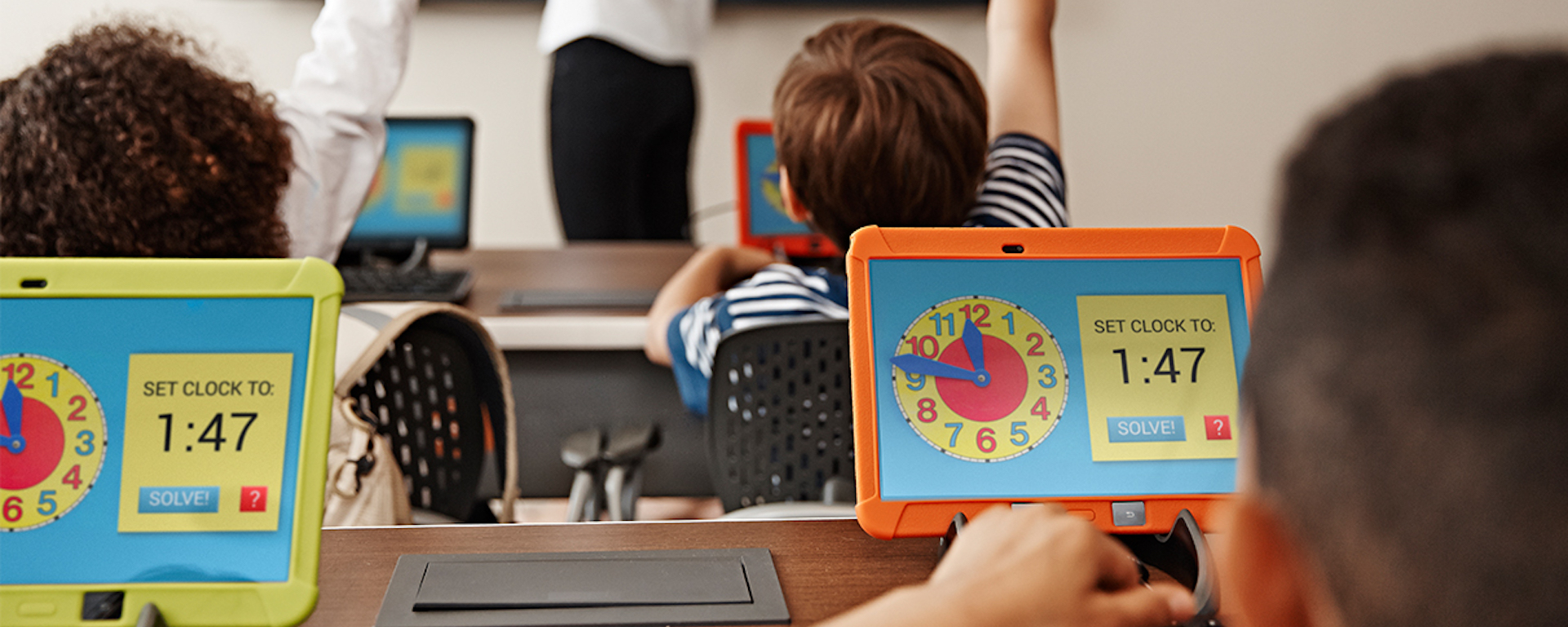Alright, let's dive right in. The Department of Education—you've probably heard about it, maybe even had some thoughts or opinions swirling around in your mind. But what does it really do? There are so many claims floating out there, some true, some exaggerated, and others just plain wrong. In this article, we're going to break down three of the most common claims about the Department of Education and separate fact from fiction. So buckle up, because we're about to take a deep dive into the world of education policy.
Now, before we get into the nitty-gritty details, let’s set the stage. The Department of Education is a federal agency in the U.S. that plays a crucial role in shaping the nation's educational landscape. From funding schools to enforcing civil rights laws, it’s a big deal. But how much do you really know about it? Let’s explore the truth behind the claims and uncover what the Department of Education is all about.
By the end of this article, you’ll have a clearer understanding of its functions, impact, and the controversies surrounding it. So, whether you're a parent, a student, a teacher, or just someone interested in education policy, this article has something for everyone. Let’s get started!
Table of Contents:
- Claim 1: The Department of Education Controls Everything in Schools
- Claim 2: The Department of Education Only Focuses on K-12 Education
- Claim 3: The Department of Education Wastes Taxpayer Money
- A Quick Look at the Department of Education
- What Exactly Does the Department of Education Do?
- How Does the Department of Education Fund Schools?
- Enforcing Civil Rights in Education
- The Role of the Department in Higher Education
- Controversies Surrounding the Department of Education
- The Future of the Department of Education
Claim 1: The Department of Education Controls Everything in Schools
Alright, let’s talk about this big claim. Many people think the Department of Education has its hands in every aspect of school operations. But is that really true? Well, not exactly. The Department of Education does have a significant role, but it doesn’t micromanage every single thing that happens in schools.
Here’s the deal: the Department sets broad policies and guidelines, but the actual day-to-day operations of schools are mostly handled by state and local governments. Think of it like this: the Department of Education is like the captain of the ship, setting the course and making sure everyone follows the rules. But the crew—the states and local districts—are the ones actually steering the ship and making things happen on the ground.
For example, the Department might set standards for student achievement or provide funding for certain programs, but it doesn’t tell teachers what to teach or how to teach it. That’s left up to the states and districts. So, while the Department does have influence, it’s not the all-powerful force some people make it out to be.
What About Curriculum?
Let’s zoom in on curriculum for a moment. A lot of folks assume the Department of Education dictates what’s taught in classrooms. Not so fast. Curriculum decisions are mostly made at the state and local levels. The Department might offer guidance or recommendations, but it doesn’t have the authority to force schools to adopt specific curricula.
However, the Department does play a role in ensuring that schools meet certain standards, especially when it comes to things like standardized testing and accountability measures. So, while it doesn’t control every aspect of education, it does have a hand in shaping the overall landscape.
Claim 2: The Department of Education Only Focuses on K-12 Education
Another common claim is that the Department of Education only focuses on K-12 education. But guess what? That’s not entirely accurate. While K-12 education is a big part of what the Department does, it also plays a significant role in higher education and other areas.
For instance, the Department administers federal student aid programs, which help millions of students pay for college. It also oversees the accreditation of colleges and universities, ensuring that they meet certain standards of quality. Additionally, the Department works on initiatives to improve access to higher education for underrepresented groups.
So, while K-12 education is definitely a priority, the Department’s reach extends far beyond that. It’s involved in everything from early childhood education to adult learning programs. In short, the Department of Education is a multi-faceted agency with a wide range of responsibilities.
Higher Education Initiatives
Let’s break down some of the key initiatives the Department is involved in when it comes to higher education:
- Federal Student Aid: The Department provides billions of dollars in financial aid to students each year, helping them afford college.
- Accreditation: The Department ensures that colleges and universities meet certain standards of quality, protecting students from subpar institutions.
- Research and Innovation: The Department supports research and innovation in higher education, promoting new ideas and approaches to teaching and learning.
As you can see, the Department’s involvement in higher education is substantial and far-reaching. It’s not just about K-12—it’s about the entire educational continuum.
Claim 3: The Department of Education Wastes Taxpayer Money
Okay, let’s tackle this controversial claim. Many critics argue that the Department of Education wastes taxpayer money. But is that really the case? Let’s take a closer look.
First off, it’s important to note that the Department’s budget is relatively small compared to other federal agencies. In fact, it accounts for just a tiny fraction of the overall federal budget. So, while it’s easy to criticize the Department for wasting money, the reality is that it operates on a relatively modest budget.
That said, like any large organization, the Department is not immune to inefficiencies or mismanagement. There have been instances where funds have been misallocated or programs have failed to deliver on their promises. However, these issues are not unique to the Department of Education—they’re common in any large bureaucracy.
Where Does the Money Go?
Let’s break down where the Department’s money actually goes:
- Federal Grants: The majority of the Department’s budget goes toward federal grants for schools and students. These grants help fund everything from special education programs to Pell Grants for college students.
- Research and Development: The Department invests in research and development to improve educational outcomes and innovate new approaches to teaching and learning.
- Administrative Costs: Like any agency, the Department has administrative costs, but these are kept to a minimum to ensure that the majority of funds go directly to programs and services.
So, while there may be some inefficiencies, the vast majority of the Department’s budget is spent on programs and services that directly benefit students and schools.
A Quick Look at the Department of Education
Now that we’ve explored some of the claims about the Department of Education, let’s take a step back and look at the bigger picture. Here’s a quick overview of the agency:
| Founded | 1979 |
|---|---|
| Headquarters | Washington, D.C. |
| Annual Budget | Approximately $70 billion |
| Number of Employees | Approximately 4,000 |
| Key Programs | Federal student aid, special education, civil rights enforcement, and more |
As you can see, the Department of Education is a relatively small but mighty agency with a big impact on the nation’s educational system.
What Exactly Does the Department of Education Do?
Let’s break down the key functions of the Department of Education:
- Setting Standards: The Department sets standards for student achievement and accountability, ensuring that schools are meeting certain benchmarks.
- Providing Funding: The Department provides funding for schools and students through federal grants and programs.
- Enforcing Civil Rights: The Department enforces civil rights laws to ensure that all students have equal access to education.
- Supporting Innovation: The Department supports research and innovation in education, promoting new ideas and approaches to teaching and learning.
These functions are crucial to ensuring that every student in America has access to a quality education, regardless of their background or circumstances.
How Does the Department of Education Fund Schools?
Funding is one of the most important functions of the Department of Education. Here’s how it works:
The Department provides funding through a variety of programs, including:
- Title I Grants: These grants provide funding to schools with high numbers of low-income students.
- Special Education Grants: These grants support programs for students with disabilities.
- Pell Grants: These grants help low-income students pay for college.
While the Department provides significant funding, it’s important to note that the majority of school funding comes from state and local sources. The Department’s role is to supplement these funds and ensure that all students have access to the resources they need to succeed.
Enforcing Civil Rights in Education
One of the Department’s key responsibilities is enforcing civil rights laws in education. This includes:
- Title IX: Ensuring that schools do not discriminate on the basis of sex.
- Section 504: Protecting the rights of students with disabilities.
- Civil Rights Act: Prohibiting discrimination on the basis of race, color, or national origin.
By enforcing these laws, the Department helps ensure that all students have equal access to education, regardless of their background or circumstances.
The Role of the Department in Higher Education
As we’ve already discussed, the Department of Education plays a significant role in higher education. Here’s a closer look at some of its key initiatives:
- Federal Student Aid: Providing financial assistance to millions of students each year.
- Accreditation: Ensuring that colleges and universities meet certain standards of quality.
- Research and Innovation: Supporting research and innovation in higher education to improve outcomes for students.
These initiatives are crucial to ensuring that higher education remains accessible and affordable for all students.
Controversies Surrounding the Department of Education
No government agency is without its controversies, and the Department of Education is no exception. Here are a few of the biggest controversies:
- Standardized Testing: Critics argue that the Department’s emphasis on standardized testing places undue pressure on schools and students.
- Common Core: The Department’s support for Common Core standards has been controversial, with some arguing that it oversteps its authority.
- Funding Priorities: Some critics argue that the Department’s funding priorities are misguided, focusing too much on certain programs at the expense of others.
While these controversies are real, it’s important to remember that the Department is constantly evolving and adapting to meet the changing needs of the nation’s educational system.
The Future of the Department of Education
So, what does the future hold for the Department of Education? As the nation’s educational landscape continues to evolve, the Department will likely play an increasingly important role in shaping policy and ensuring that all students have access to a quality education.
Some key areas to watch include:
- Technology Integration: The Department will likely focus more on integrating technology into the classroom to improve learning outcomes.
- Equity and Access: Ensuring that all students, regardless of background, have access to quality education will remain


